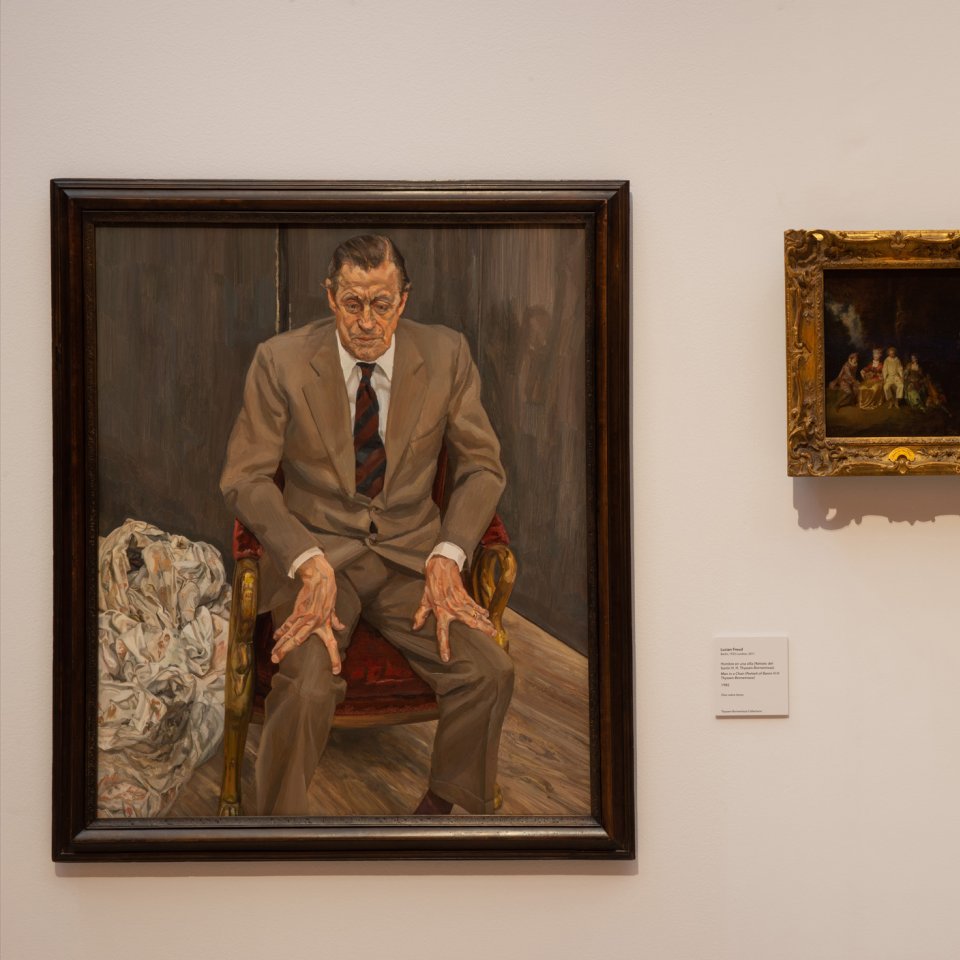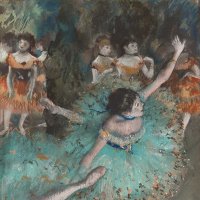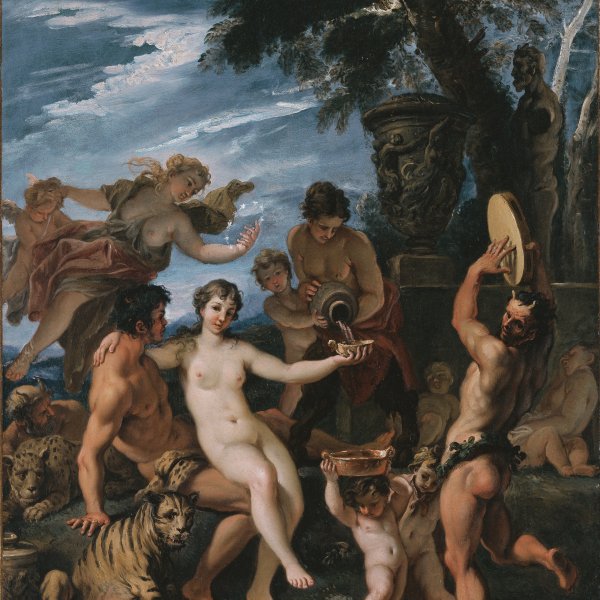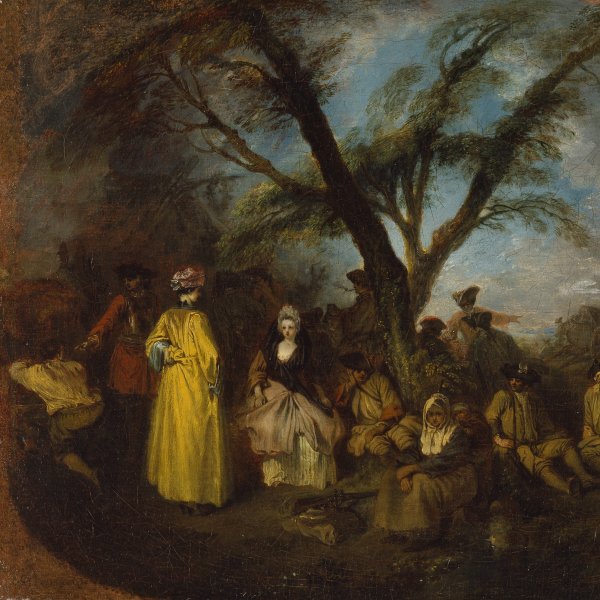Pierrot Content
This painting, a fête galante, recalls scenes from the Commedia dell’arte, a world to which Watteau was introduced in Paris by his master, Claude Guillot. Enveloped in a magical atmosphere, Pierrot sits at the centre of the composition, flanked by two men and two women, one of whom is playing the guitar. Like many seventeenth-century Italian landscapes, the scene is set in the corner of a garden; a statue of Pan can be discerned among the thick surrounding foliage. From an engraving made by Jeurat in 1728, we know that Watteau designed the painting with a horizontal format—it was cropped in the nineteenth century—and that he included two figures, Mezzetin or Scaramouche and Harlequin, peeping out at the group from among the trees. These figures and other details are no longer visible owing to defects in technique that have darkened this area of the canvas.
EA
The title of the present canvas is derived from a print by Edme Jeaurat of 1728 that reproduces the painting with this title and which also includes valuable information on some elements that are no longer visible in the canvas due to the effects of time. To judge from the print the composition originally had a landscape format with a more extensive garden around the principal figures. This fact has led to the assumption that the present painting was cut down on both sides at an unknown date. Jeaurat’s print also includes two figures, identified as Mezzetin or Scaramouche and Harlequin, whose heads peer out of the trees at the scenes that they have encountered. They are just visible in the painting but this area of the canvas has darkened to a considerable degree due to the artist’s imperfect technique, to which he paid comparatively little attention.
Watteau located his scene in an exquisite corner of a garden, surrounded by the dense branches of a grove of trees in which we can make out a statue of Pan. The small, harmonious and colourful figures are richly dressed in what may be theatrical costumes. The amorous subject matter, which is charged with a subtle melancholy, involves Pierrot with two women, one with a guitar and the other with a fan, and two men, of whom the one on the left is dressed as Mezzetin. These figures, presented as self-absorbed and pensive, are enveloped in a magical atmosphere, captured by Watteau in a fleeting moment of pleasure, as we see in other works by the artist.
Pierrot content is one of the first scenes of this type that Watteau located in an outdoor setting. The painting has two obvious pentimenti in the figure of the woman with a fan, one correcting the position of her head, which was originally more to the right, and the other relating to the bottom of her dress, which was originally intended to spread out more towards Pierrot’s feet. The composition has been related to three others by the artist: Les Jaloux, a lost work known from a copy in the National Gallery of Melbourne; L’Arlequin jaloux, also lost but known from prints; and La partie quarrée in the Fine Arts Museums of San Francisco. All three depict small, elegant figures wearing brilliant silks and satins in a garden of dense vegetation. Five drawings are known that relate to the present canvas: one in the Musée des Beaux-Arts in Rouen that depicts Pierrot’s frontal, symmetrical figure; another in the Kupferstichkabinett in Berlin with a sketch of the head and part of the bust of the figure seated on the left, who is also depicted in another drawing that repeats the same position of the body. The other three drawings are studies for the woman with the fan and the man seated at her feet.
The present painting was chosen by Lucian Freud as the background for a portrait of Baron Hans Heinrich Thyssen-Bornemisza, while it also inspired Freud in his monumental painting entitled Large Interior W. II.
Mar Borobia













